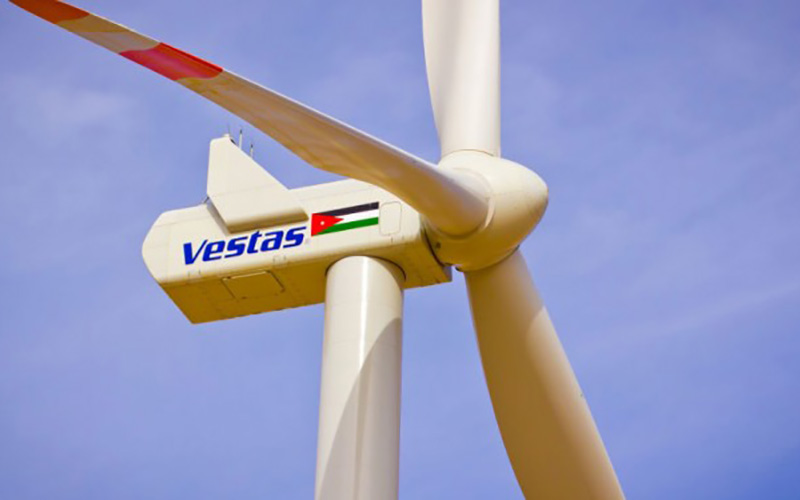Autumn Launch for First Wind Farm
Jordan’s first utility-scale wind project is set to begin operating in September, said the head of the company behind the pioneering project which aims to help diversify Jordan’s energy basket away from its overwhelming reliance on expensive fossil fuels.
Jordan Wind Project Company (JWPC) Chairman Samer S. Judeh said the 117 MW wind farm currently under construction in the Tafileh governorate will comprise 38 turbines, each with a rated capacity of 3.08 MW and some of which will begin operating imminently. “Partial energization of the facility will commence very soon,” said Judeh.
Conceived in 2009, the Tafileh wind project received $221 million of its $287 total funding from a syndication of six international banks: the International Finance Corporation (IFC), which is part of the World Bank Group, the European Investment Bank (EIB), the Dutch Development Bank (FMO), the OPEC Fund for International development (OFID), and Europe Arab Bank (EAB). The Danish Export Credit Agency (EKF) provided guarantees for a portion of the financing.
The rest of funding was provided by three investors; Paris based InfraMed Infrastructure Fund, Masdar Power of Abu Dhabi, and EP Global Energy of Cyprus.
To secure financial backing, Judeh said a series of stringent environmental and social impact assessments had to be carried out. “The development period for the project was quite challenging. We undertook a very extensive environmental and social impact assessment in line with the standards required from our financiers,” he said. “The existing conditions in the project area were studied thoroughly, and the project design was modified extensively to minimize impacts to the area based on the data we collected.”
Judeh said several factors were taken into account when choosing the location of the wind farm. First and foremost, there had to be enough year-round wind to make the project viable. “The project needs a large amount of wind data in order to determine the appropriate turbine model and estimate generation amounts … The wind conditions were measured and recorded continuously for over two years. The results of the measurement campaign showed that the site was indeed as windy as we had hoped,” explained Judeh.
He added that one of the advantages of renewable projects would also be bringing much needed investment to the underdeveloped southern governorates of Jordan.
Ultimately, he believes his project was important to blaze a trail for others to follow in Jordan’s nascent renewable energy sector. “All new projects and new industries are difficult to venture into at the beginning. Developing this project and securing its financing was a difficult and lengthy process because it was a learning experience both for the developer and the government,” said Judeh. “We were the groundbreakers and many of the contracts and conditions that were negotiated for this project were carried forward to become templates for other projects.”
The disruption of the Egyptian gas following the toppling of Egyptian President Hosni Mubarak ratcheted up pressure on Jordan to generate electricity using heavy fuel while looking for alternative sources of energy. Yet an almost 50 percent drop in oil prices last year raised worries that it could mean less interest in renewable energy projects.
Judeh stressed that the fall in oil prices doesn’t mean that Jordan should ease off on developing renewable energy, particularly that oil prices continue to fluctuate.
He estimates that the Tafileh wind farm alone will save the treasury $50 million a year in what would otherwise be paid to generate electricity using diesel, heavy fuel, and gas. According to Judeh, wind projects in general generate more power than solar projects due to the fact that they operate on a 24 hour basis.

